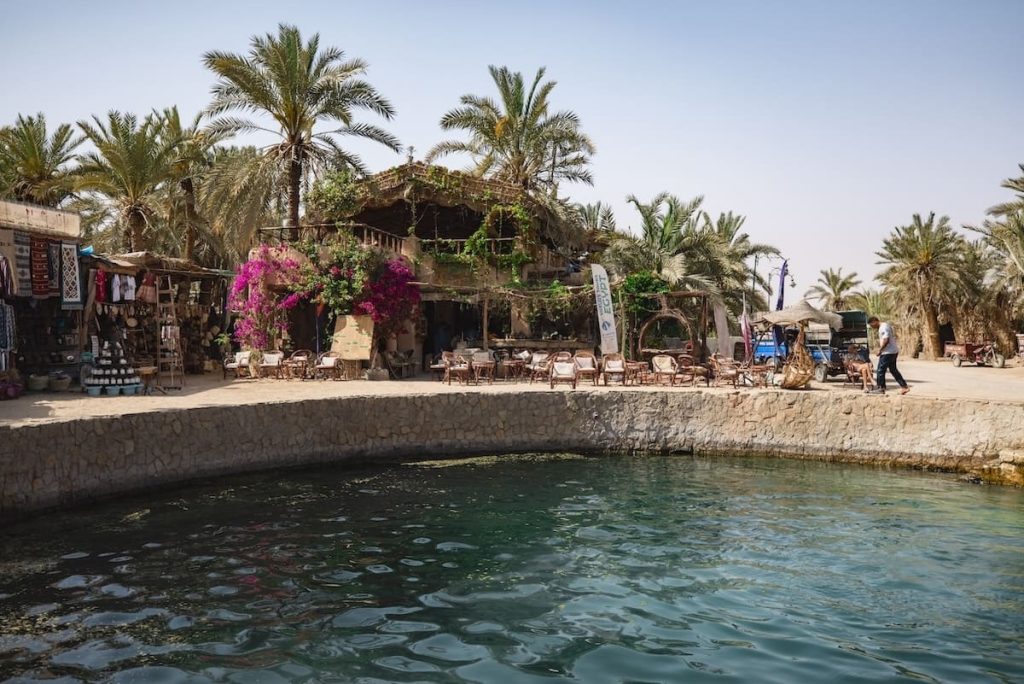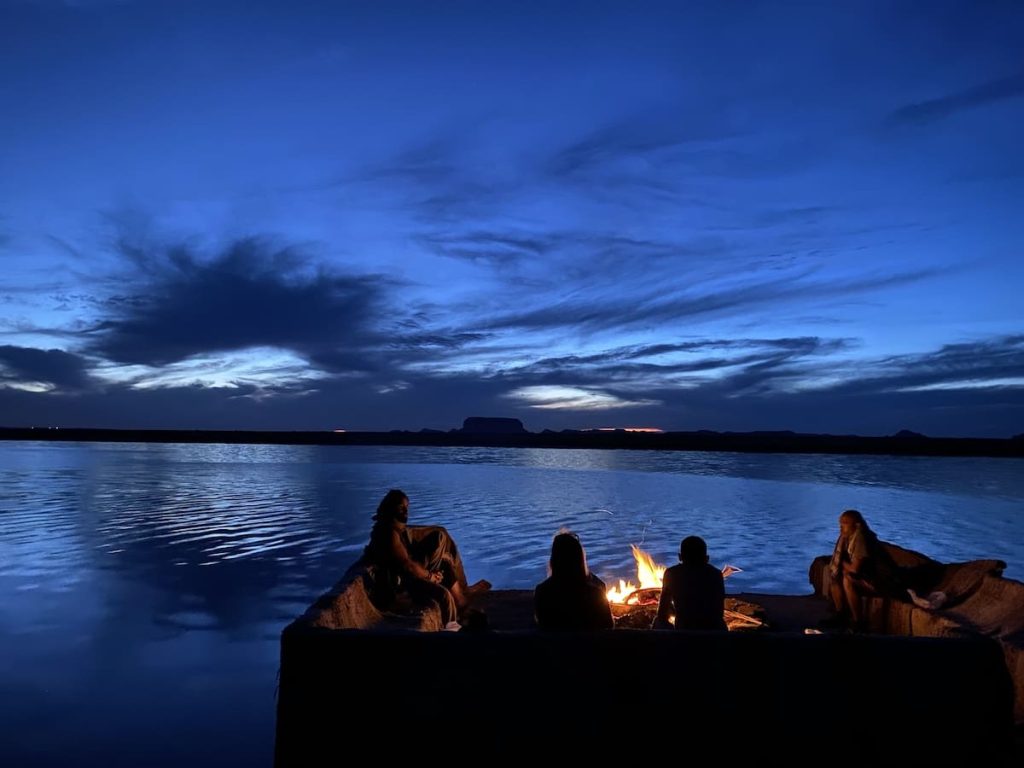Unveiling the Mysteries of The Western Desert in Egypt: A Comprehensive Guide
Egypt, a land synonymous with ancient pyramids and majestic temples, holds a lesser-known treasure in its Western Desert. This vast expanse of wilderness, far from the usual tourist trails, offers an adventure that’s both unique and unforgettable. Laura Di Stefano, an Italian historian, photographer, and travel writer, shares her insights in her travel blog post “How to organise an unforgettable trip to the Western Desert in Egypt” on “The Historian Traveller” website. This article delves into the key takeaways from her post, providing a detailed guide for those daring to explore this hidden gem.
Desert Adventure: 5-Day The Obeiyed Cave Safari Tour
1. Beyond the Beaten Path: The Western Desert's Diverse Appeal
The Western Desert in Egypt is a stark contrast to the country’s iconic attractions. It’s a landscape that boasts a variety of natural wonders, from the surreal White and Black Deserts to volcanic mountains and crystal-laden terrains. This region offers a travel experience that’s rich in diversity and far removed from the typical Egyptian tourist experience.
2. Navigating Military Presence: The Importance of Permits
Travelers must be cognizant of the military presence in the Western Desert. To visit this area, obtaining a military permit is mandatory. This requirement underscores the importance of planning and adhering to local regulations, ensuring a hassle-free journey into this remote region.
3. The Role of Local Guides in Western Desert Expeditions
Local guides are not just helpful but essential for a safe and authorized visit to the Western Desert. They possess invaluable knowledge of safe routes and are instrumental in assisting with travel authorization. Their expertise ensures that visitors can navigate the desert’s challenges safely and responsibly.

4. Camping Under the Stars: Preparations and Precautions
Camping in the White Desert is a highlight of the Western Desert experience. However, it requires prior authorization and the payment of fees. Due to the significant temperature variations, it’s crucial to bring warm clothing. This preparation allows travelers to comfortably enjoy the stark beauty of the desert under the night sky.

Desert Dynasties: 6-Day The Great Pharaohs & White Desert Tour
5. Diverse Activities: From Sandboarding to Hot Springs
The Western Desert is a playground for adventure seekers. Activities range from exploring the geological marvels of the Black and White Deserts to climbing volcanic mountains. Visitors can marvel at the natural beauty of the Crystal Mountain and unwind in soothing hot springs. Each activity offers a unique way to experience the desert’s diverse landscape.

6. Sunset Walks and Stargazing: Unparalleled Desert Experiences
The Western Desert transforms as the sun sets, offering breathtaking views during sunset walks in the White Desert. As night falls, the desert sky becomes a canvas for stargazing, providing a memorable experience that connects travelers with the cosmos in a profound way.
7. Embracing Responsible Tourism
Responsible tourism is a crucial aspect of visiting the Western Desert. Travelers are encouraged to leave no trace, respecting the pristine environment. Understanding and respecting local culture and customs is equally important, ensuring that the desert remains unspoiled for future generations.

8. Embracing the Thrill: Sandboarding and Desert Roads
For those seeking an adrenaline rush, sandboarding in the Western Desert is a must-try activity. However, visitors should be prepared for the rugged and bumpy desert roads, a small price to pay for the exhilaration that awaits.
9. Safety First: Staying Informed and Prepared
Given the changing situation in Egypt, particularly in the Western Desert region, staying informed about safety precautions is essential. Travelers should keep abreast of the latest news and advisories, ensuring their journey is not just memorable but also safe.
Exploring the Unique Oases of Egypt's Western Desert: Siwa, Bahariya, Farafra, Dakhla, and Kharga
Siwa Oasis: A Cultural and Historical Haven
Location and Landscape
Siwa Oasis, nestled near Egypt’s border with Libya, stands out with its stunning natural beauty and unique cultural identity. It’s set in a depression below sea level, creating a striking contrast with the surrounding desert.
Historical Significance
Siwa is steeped in history, most famously known for the Oracle of Ammon, visited by Alexander the Great. Its ancient fortresses, like the Shali Ghadi, and the Temple of the Oracle, are testaments to its rich past.

Modern-Day Siwa
Today, Siwa maintains a distinct culture, with its own Siwi language. It’s known for its traditional crafts, like basketry, and its dates and olive oil. The oasis has a serene atmosphere, offering a blend of natural beauty and cultural depth.

Activities and Attractions
Visitors can explore ancient ruins, bathe in natural hot springs, and experience the unique Siwan culture. The oasis is also famous for its stunning salt lakes and sand dunes, offering picturesque landscapes.
Bahariya Oasis: A Gateway to the Past
Location and Landscape
Located between Cairo and the other major oases, Bahariya is a verdant haven amidst the desert. It’s characterized by its lush palm groves and hot springs.
Historical Significance
Bahariya gained international fame with the discovery of the Golden Mummies in the Valley of the Mummies, showcasing its historical richness. Ancient temples and ruins dot the landscape, offering a glimpse into its past.
4-Day The White Desert and Wadi Al Hittan Exploration

Modern-Day Bahariya
The Bahariya oasis today is a mix of modernity and tradition, with agriculture playing a significant role in its economy. It serves as a gateway for tourists heading to the White and Black Deserts.
Activities and Attractions
Apart from exploring archaeological sites, visitors can enjoy the natural beauty of the surrounding desert and partake in desert safaris.
Farafra Oasis: A Deserted Beauty
Location and Landscape
Farafra, the smallest of the major oases, is known for its stark, white beauty and tranquil environment. It’s surrounded by the White Desert, famous for its surreal limestone formations.
Historical Significance
While Farafra may not boast the same historical depth as other oases, it has a charm in its simplicity and traditional way of life, preserved over centuries.
Modern-Day Farafra
The oasis today is a quiet retreat, with a small population engaged in agriculture and tourism. It offers a glimpse into the traditional oasis lifestyle.
Activities and Attractions
The main attraction is the White Desert National Park, where visitors can camp under the stars and explore the unique rock formations.
Dakhla Oasis: A Blend of History and Culture
Location and Landscape
Dakhla is a sprawling oasis with a rich agricultural landscape, characterized by its orchards and fields. It’s further inland, offering a more secluded experience.
Historical Significance
Dakhla is home to well-preserved ancient towns like Al-Qasr, with its mud-brick architecture and medieval Islamic monuments. Its history spans back thousands of years, evident in its archaeological sites.

4-Day The White Desert and Wadi Al Hittan Exploration
Modern-Day Dakhla
Today, Dakhla blends its historical heritage with modern life. It’s known for its friendly locals and traditional crafts.
Activities and Attractions
Visitors can explore ancient ruins, enjoy local cuisine, and experience the warm hospitality of the Dakhla community.
Kharga Oasis: The Largest and Most Developed
Location and Landscape
Kharga, the largest oasis, is a hub of activity and development in the Western Desert. It’s known for its lush palm groves and springs.

Historical Significance
Kharga boasts a rich history, with sites like the Temple of Hibis and the Necropolis of Bagawat showcasing its ancient past.
Modern-Day Kharga
As the most developed oasis, Kharga offers a mix of modern amenities and historical sites. It’s a center for trade and agriculture in the region.
Baris Oasis: A Hidden Gem in the Western Desert
Baris Oasis, often overlooked in discussions about Egypt’s Western Desert, is another remarkable spot that deserves attention. While it may not be as well-known as Siwa or Bahariya, Baris offers its unique charm and a glimpse into the serene desert life.
Location and Landscape
Baris is located in the southern part of the Western Desert, near Kharga Oasis. It’s part of the New Valley Governorate, which encompasses the more southern oases of the Western Desert. The landscape around Baris is characterized by its tranquil desert setting, dotted with palm trees and natural springs.
Historical Significance
Baris holds historical significance, much like the other oases in the Western Desert. It is home to ancient ruins and artifacts that date back to various periods in Egyptian history, including the Pharaonic, Roman, and Islamic eras. One notable site is the Temple of Dush, dedicated to Isis and Serapis, which showcases the Roman influence in the area.
Modern-Day Baris
In contemporary times, Baris is a quiet, less commercialized oasis compared to its northern counterparts. It offers a more authentic experience of oasis life. The local community is engaged in agriculture, utilizing the natural springs for irrigation. Visitors to Baris can enjoy the simplicity of life here, away from the bustling tourist spots.
Activities and Attractions
While Baris may not offer the same range of activities as larger oases, its serene environment is perfect for those seeking peace and quiet. Visitors can explore ancient ruins, enjoy the natural landscapes, and interact with the local community to understand their way of life.
Importance of Responsible Tourism
As with other parts of the Western Desert, visitors to Baris are encouraged to practice responsible tourism. This includes respecting the local culture and environment, ensuring that the oasis maintains its natural beauty and cultural integrity for future generations.
Conclusion
Each oasis in Egypt’s Western Desert offers its unique blend of history, culture, and natural beauty. From the cultural depth of Siwa to the historical richness of Bahariya, the tranquility of Farafra, the heritage of Dakhla, and the vibrancy of Kharga, these oases provide a comprehensive and diverse experience of the Western Desert’s wonders.
Insights from a Seasoned Explorer
Islam’s blog is more than just a travel guide; it’s a treasure trove of personal experiences and insights. His background as an Egyptology enriches his writing, offering readers a comprehensive and engaging guide to planning a successful trip to the Western Desert.
In conclusion, a journey to Egypt’s Western Desert is an adventure that transcends the conventional tourist experience. It’s a journey that demands careful planning, respect for local customs, and an adventurous spirit. With the insights from Islam ‘s blog, travelers can embark on a trip that’s not just unforgettable but also deeply enriching. The Western Desert awaits, ready to unveil its mysteries to those daring enough to explore its vast, uncharted sands.
Your Travel Story Awaits
With Travel2Egypt, every itinerary is a chapter in your personal book of adventures, each experience a narrative waiting to unfold. We are here to guide you through Egypt’s most sacred spaces and hidden corners, crafting a journey that resonates with your spirit of exploration.
- Visit our comprehensive travel guide to inspire your next Egyptian adventure.
- Connect with us to tailor your journey to the rhythms of the Nile and the whispers of the desert wind.
“Let us be the compass that guides you to the heart of Egypt, where every grain of sand has a story, and every moment is a treasure waiting to be discovered.”
Join us at Travel2Egypt.org, where your journey is our canvas, and together, we create the masterpiece of your dreams. Contact us to begin your timeless voyage through the Land of the Pharaohs.






